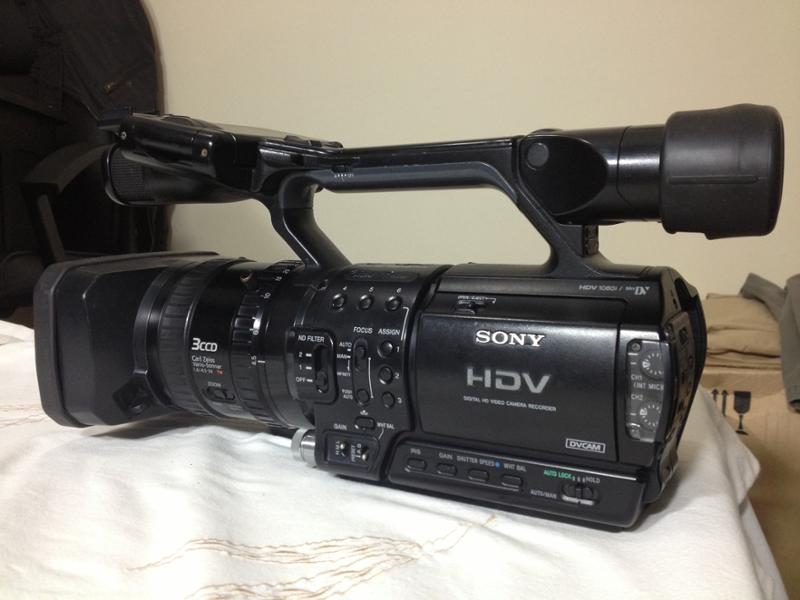

- SONY HDV DIGITAL HD VIDEO CAMERA RECORDER ARCHIVE
- SONY HDV DIGITAL HD VIDEO CAMERA RECORDER PORTABLE
- SONY HDV DIGITAL HD VIDEO CAMERA RECORDER PROFESSIONAL
It was the first video production to be produced in the 1125-line high-definition television (HDTV) format. World War II: When Lions Roared (also known as Then There Were Giants) is a 1994 TV movie, directed by Joseph Sargent, that stars John Lithgow, Michael Caine and Bob Hoskins as the three major Allied leaders. 5 cameras were connected to 7-input HDS-1000T switcher and live mix was recorded to an HDD-1000 Digital 1" VTR. Four HDC-300 3 cameras in 1125-line format (1080i today), 60 fps, and one Sony HDC-500 3 CCD prototype HDVS camera. Montreux Jazz Festival in 1991 was filmed using Sony HDVS video system. For the Genesis Invisible Touch Tour shows at Wembley Stadium in July 1987, the Sony HDVS system was used to film these shows, which were later released on VHS and LaserDisc in 1988 and DVD in 2003.
SONY HDV DIGITAL HD VIDEO CAMERA RECORDER PROFESSIONAL
The first drama film shot using the HDVS professional video camera was RAI's Julia and Julia ( Italian: Giulia e Giulia) in 1987, and the first HDTV television show was CBC's Chasing Rainbows, shot using the HDVS system in 1988. The Sony HDVS system was used in the production of a 5-min feature film about Halley's Comet in 1986, titled " Arrival", and shown in US theatres later that year after being transferred to 35mm film. The high price of the system limited its adoption severely, selling just several dozen systems and making its adoption largely limited to medical, aerospace engineering, and animation applications. The metal evaporate tape (tape whose magnetic material was evaporated and deposited onto the tape in a vacuum chamber using physical vapor deposition) cost US$2500.00 per hour of tape and each reel weighed nearly 10 pounds. The price of the HDD-1000 and its required companion HDDP-1000 video processor in 1988 was US$600,000. The small cassette size limited recording time to about 63 min. The transport housing similar in appearance to Sony's D1/D2 Standard Definition Digital VTRs, but recorded analog HD.

SONY HDV DIGITAL HD VIDEO CAMERA RECORDER PORTABLE
There was also a portable videocassette recorder (the HDV-10) for the HDVS system, using the "UniHi" format of videocassette using 3/4" wide tape.

SONY HDV DIGITAL HD VIDEO CAMERA RECORDER ARCHIVE
Sony, owner of Columbia Pictures/Tri-Star, would start to archive feature films on this format, requiring an average of two reels per movie. The large unit was housed in a 1-inch reel-to-reel transport, and because of the high tape speed needed, had a limit of 1-hour per reel.

Sony in 1988 unveiled a new HDVS digital line, including a reel-to-reel digital recording VTR (the HDD-1000) that used digital signals between the machines for dubbing but the primary I/O remained analog signals. The helical scan VTR (the HDV-100) used magnetic tape similar to 1" type C videotape for analog recording. The HDVS range was launched in April 1984, with the HDC-100 camera, which was the world's first commercially available HDTV camera and HDV-1000 video recorder, with its companion HDT-1000 processor/TBC, and HDS-1000 video switcher all working in the 1125-line component video format with interlaced video and a 5:3 aspect ratio. Sony first demonstrated a wideband analog video HDTV capable video camera, monitor and video tape recorder (VTR) in April 1981 at an international meeting of television engineers in Algiers, Algeria.


 0 kommentar(er)
0 kommentar(er)
